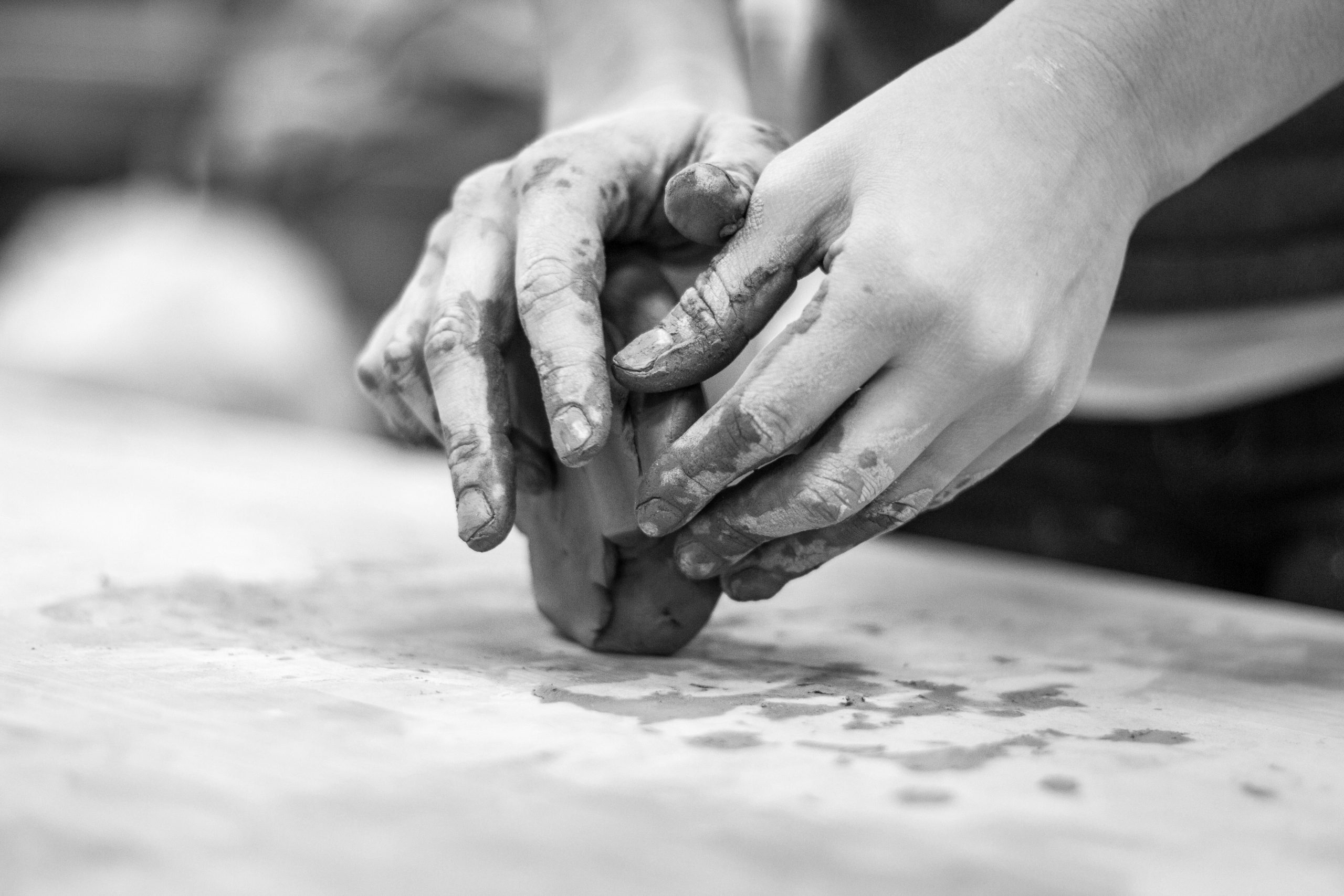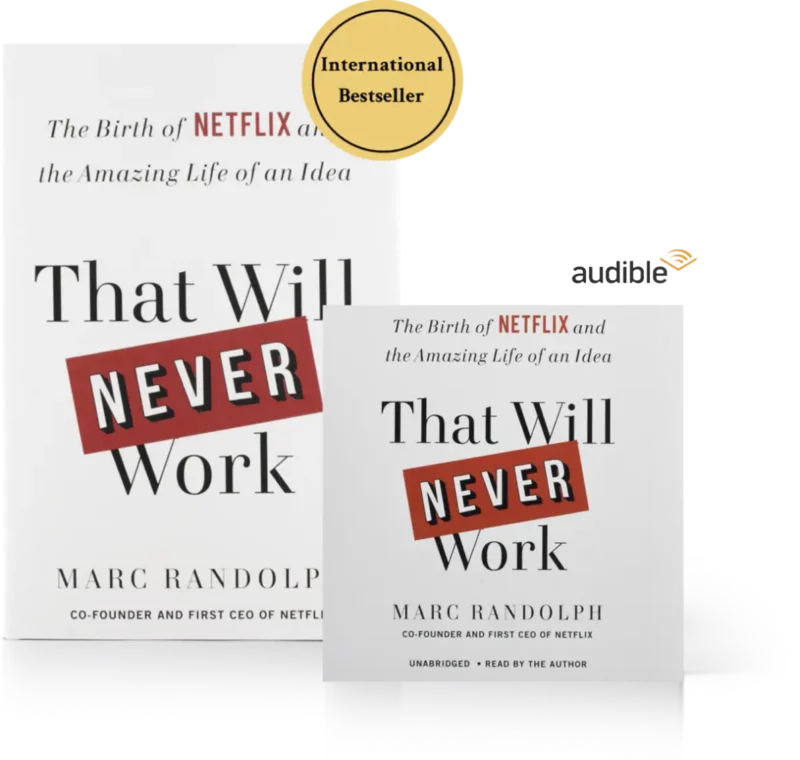Your Idea Sucks. But guess What? It Doesn’t Matter.
When it comes to ideas, you have to get used to having your perfect sculptures squished.

Back when I was in college, approximately 250 years ago, a friend of mine was a sculptor.
She was taking a class with some famous visiting artist, the kind of guy who walks around in paint-spattered jeans and a beret, and every other day, he would come to her studio to critique her work.
At the time, she was making these abstract fractals out of clay. They kind of looked like ferns. Each one was two or three feet tall, and took her weeks to finish. They were pretty good, I thought.
The first time the visiting artist came to my friend’s studio, she had just started a new one. In maybe six or seven hours of work she had basically just done the stalk. “This is alright,” he said, slowly circling the work and nodding slowly. “I like where you’re headed with this.”
Then he put his hand on top of the piece and pressed the whole thing into a hockey puck.
“Now do it again,” he said.
My friend was furious. She had spent all day on that work! But he just shrugged.
“If you want to spend the entire semester taking a single idea and making it perfect, be my guest,” he said. “But you already know where that one was going.” He gestured at the mound of clay. “If it was good, then you’ve got a good head start on the direction you’ll go tomorrow. If it was bad, then you’ll try another direction. Either way, you’re going to be better, faster, and more intuitive.”
There’s a lesson here for aspiring entrepreneurs. Actually, there are three of them.
Lesson number one is that when it comes to ideas, you have to get used to having your perfect sculptures squished.
Lesson number two is that most of those sculptures aren’t actually perfect. In fact, they probably kind of suck.
And lesson number three?
It doesn’t matter.
As entrepreneurs, or artists, or just people with dreams, the worst thing you can do is get so caught up in planning the perfect idea that you never get around to actually… well, doing it. I call this building castles in your mind.
An imaginary castle is a stalling tactic disguised as an idea. Instead of actually building something, you just keep perfecting the design. In your head, you put down the ground floor, then the mezzanine. You figure out the wallpaper. And the landscaping. And before you know it, you’ve put on turrets, flying buttresses, and gargoyles.
Pretty quickly, the imaginary castle in your mind is huge. Ornate. And unbelievably expensive to build.
And that’s when you think: Well, I need millions of dollars to build this. Maybe I should go back to school and get my MBA first. There’s no way I can do this without a hundred other people to help me.
Excuses, every one.
The truth is, the site for your imaginary castle is probably a swamp. The blueprints you think are so perfect probably include a bunch of staircases to nowhere. The whole thing would probably fall over if you built it.
In short: Your idea probably isn’t as good as you think it is. In fact, it probably sucks. Most ideas do.
You won’t know for sure until you actually take that initial idea and put it into the world. That’s why, when it comes to making a dream a reality, the key isn’t to plan everything perfectly. The key is to make more sculptures.
I don’t know if there’s a genetic marker for entrepreneurship. But if there is, it’s most likely not a genius for planning. It’s a propensity for action — and the ability to put failure behind you quickly. To stop being precious about your ideas.
Iteration, not ideation, is the most important part of early stage entrepreneurship. You have to have a lot of ideas — a lot of bad ideas — if you want to end up with a good one. You have to make a lot of sculptures. And then you have to put them out in the world, where people can see them and give you feedback — and yes, squish them if necessary.
You have to stop thinking and start doing.
It used to be a lot harder to take an idea out of your head and put some version of it in the real world. When we were kicking around the idea for Netflix in 1997, proving out an idea was expensive and labor-intensive. There was no Squarespace, no cloud. If you wanted a website, you had to build it from scratch. If you wanted an online store, you had to completely design it yourself.
That’s not the case anymore. It’s easy, now, to test an idea in the real world. And it’s necessary. Other people see things that you would have never considered, much less intended. A throwaway quirk can become a major function. A bug can become a feature.
All the planning in the world doesn’t matter, because ideas have a way of changing, once they hit the real world. I’ve never seen a business plan survive an encounter with a real customer.
Or, as Mike Tyson put it: “Everyone has a plan until they get punched in the mouth.”
The trick is not to devote yourself to coming up with the perfect idea. It’s to be like my sculptor friend, and get comfortable with bad ideas.
So stop being precious about creation. Instead, get addicted to the thrill of ideation and iteration. Don’t just design castles in your mind — build mock-ups in plaster.
Chances are, you’ll end up squishing a lot of them. But one day, you might build something that, even though it’s flawed, has something interesting in it. Something that people like. Something that could work.
RECOMMENDED FOR YOU
The Idea Isn’t The Important Part
Podcast Episode 72
Is it a Culture Problem or a Hiring Problem?
October 25, 2022 • 38 min
